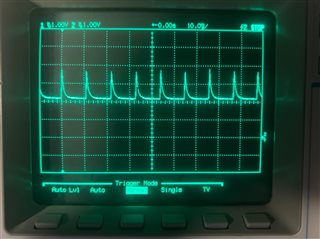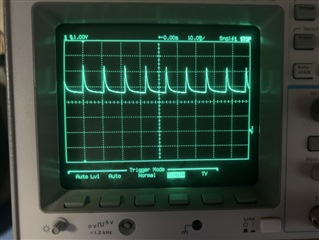Other Parts Discussed in Thread: BQ40Z50, , BQ40Z50-R2
Tool/software:
Hi there—our product comprises a 1S battery pack implemented using a BQ40Z50, and charged by the BQ25798. The pack implements its own precharge path—the schematic is identical to figure 9-1 of the BQ40Z50-R2 datasheet, modified according to the datasheet for a 1S design.
The precharge current-limiting resistor (R1) is 100 ohm, and the precharge threshold of the is BQ40Z50 is set to 2.5 V. The UVP threshold of the BQ40Z50 is set to 2.8 V, so we don't expect the precharge path of the BQ40Z50 to be enabled under normal circumstances. Stated another way, the battery should not self-discharge below 2.8 V within any reasonable time frame.
We received a customer return in which the cells had self-discharged to nearly 2.2 V, prompting the BQ40Z50 to enter precharge mode and enable its PCHG FET. This inexplicably low cell voltage suggests one or more cell(s) is defective, and the pack will go back to the vendor for FA.
Once I started charging the battery, I noted the BQ25798 repeatedly elicited a VBAT OVP fault; its registers were reported as follows:
0 1 2 3 4 5 6 7 8 9 a b c d e f00: 04 01 90 01 f4 24 00 64 d4 0a 23 00 dc 4b 3d a210: 80 00 10 01 14 aa c0 7a 55 00 64 0f 0a 01 10 0020: 20 00 00 80 10 10 20 00 ff c7 7f 1f ff fc 80 0030: 00 00 c5 00 00 14 3c 14 44 14 42 0a 90 0f 2e 0240: 59 00 28 00 00 00 00 00 19 ff ff ff ff ff ff ff
I measured cell voltage (2.2 V DC) on the cell side of the precharge current-limiting resistor, and the rapidly enabled and disabled charger output on the pack side of the precharge current-limiting resistor as follows:

This is synonymous with the battery being disconnected, although it is not—it simply seems as though the charger cannot push current through the PCHG FET of the pack. I shorted across the precharge current-limiting resistor, and the OVP fault was removed. The same registers suggest the BQ25798 is successfully precharging the battery:
0 1 2 3 4 5 6 7 8 9 a b c d e f00: 04 01 90 01 f4 24 00 64 d4 0a 23 00 dc 4b 3d a210: 80 00 10 01 14 aa c0 7a 55 00 64 0f 4a 01 10 0020: 00 00 80 80 10 10 20 00 ff c7 7f 1f ff fc 80 0030: 00 03 33 03 5f 13 e4 13 e3 13 e0 0a 88 0f 1d 0240: 59 00 4d 00 00 00 00 00 19 ff ff ff ff ff ff ff
This loosely suggests the BQ25798 uses a constant-current source during precharging mode, presumably with weaker output impedance that cannot overcome the 100-ohm precharge current-limiting resistor. Is there any chance this is the case?
If so, do you recommend we bypass our pack's PCHG FET in favor of its heavy-duty CHG FET? If not, is there any other possible explanation for this behavior? Thank you in advance for your support—in case I can provide any additional information, please let me know.


